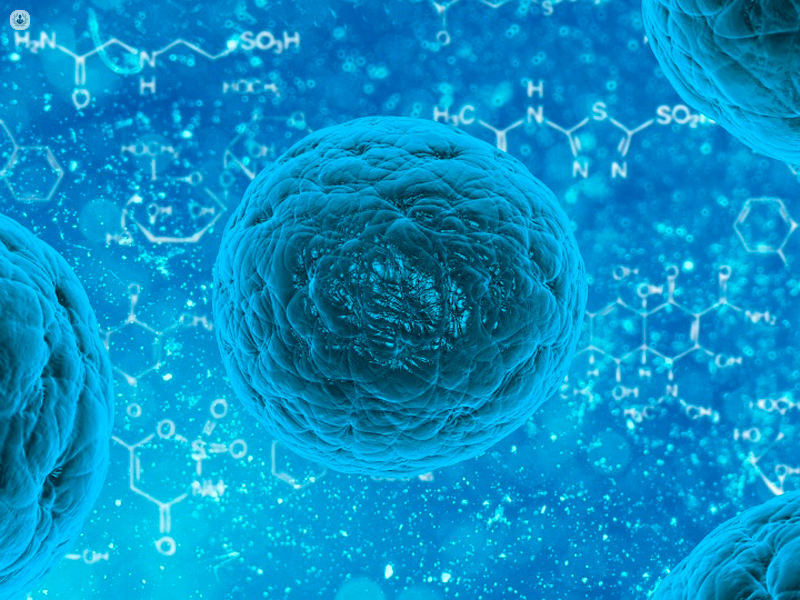Stem cells: A promising alternative to surgery for back and joint pain
Escrito por:Chronic back and joint pain can significantly affect your quality of life. Traditionally, severe cases are often treated with surgery, which can be invasive and require a long recovery period. However, recent advancements in medical science have introduced stem cell therapy as a less invasive and promising alternative. Consultant rheumatologist Dr Anthony Hammond explores how stem cells work and why they might be a favourable option for managing back and joint pain.

What are stem cells?
Stem cells are unique cells in the body with the ability to develop into many different cell types. They serve as a repair system, capable of dividing and differentiating to replace damaged or worn-out tissues. Unlike regular cells, which have a specific function, stem cells can transform into the specific type of cell needed to heal a particular area of the body.
How do stem cells work?
When stem cells are introduced into an area with damaged tissue, they can help repair and regenerate that tissue.
Stem cells are usually harvested from your own body, often from bone marrow or fat tissue, then the harvested stem cells are then processed to concentrate them. Following this, the concentrated stem cells are injected into the damaged area, such as a worn-out joint or a herniated disc.
Once injected, these stem cells get to work by reducing inflammation and stimulating the repair and growth of healthy tissue. This can result in pain relief and improved function in the treated area.
What are the benefits of stem cell therapy over surgery?
Stem cell therapy offers several advantages over traditional surgery:
There are multiple advantages to stem cell therapy over traditional surgery. One of these is the minimally invasive nature of the surgery. Unlike surgery, which involves cutting into the body, stem cell therapy is usually done through injections, reducing the risk of complications and shortening recovery time.
Stem cell therapy also offers reduced recovery time. The majority of patients can return to their normal activities much sooner compared to post-surgical recovery.
Additionally, stem cell therapy offers a can return to their normal activities much sooner compared to post-surgical recovery, and promote natural healing, because they use the body's natural repair mechanisms, which can lead to more sustainable and long-lasting results.
What are the various types of stem cell treatments for back and joint pain?
There are multiple types of stem cell treatments available, which are tailored to various conditions and individual needs, including the following:
Bone marrow-derived stem cells: These are taken from the patient's own bone marrow, often from the hip bone, and are rich in cells that can help regenerate cartilage and bone.
Adipose (fat) tissue-derived stem cells: These are harvested from the patient's own fat tissue, and are extremely effective in treating conditions like osteoarthritis.
Platelet-rich plasma (PRP) therapy: In some cases, PRP is combined with stem cell therapy, using components of the patient’s own blood to enhance healing and tissue regeneration.
Stem cell therapy represents a revolutionary step forward in the treatment of back and joint pain. By harnessing the body's natural healing abilities, this minimally invasive option offers hope to those looking for alternatives to surgery. If you’re dealing with chronic pain and seeking a treatment that could help you avoid surgery, consider discussing stem cell therapy with your healthcare provider.
If you would like to book a consultation with Dr Hammond, do not hesitate to do so by visiting his Top Doctors profile today.


